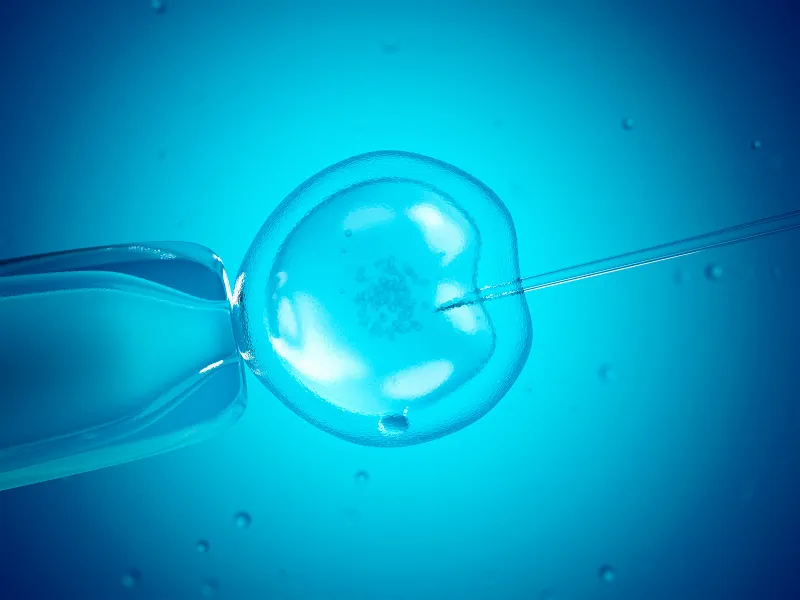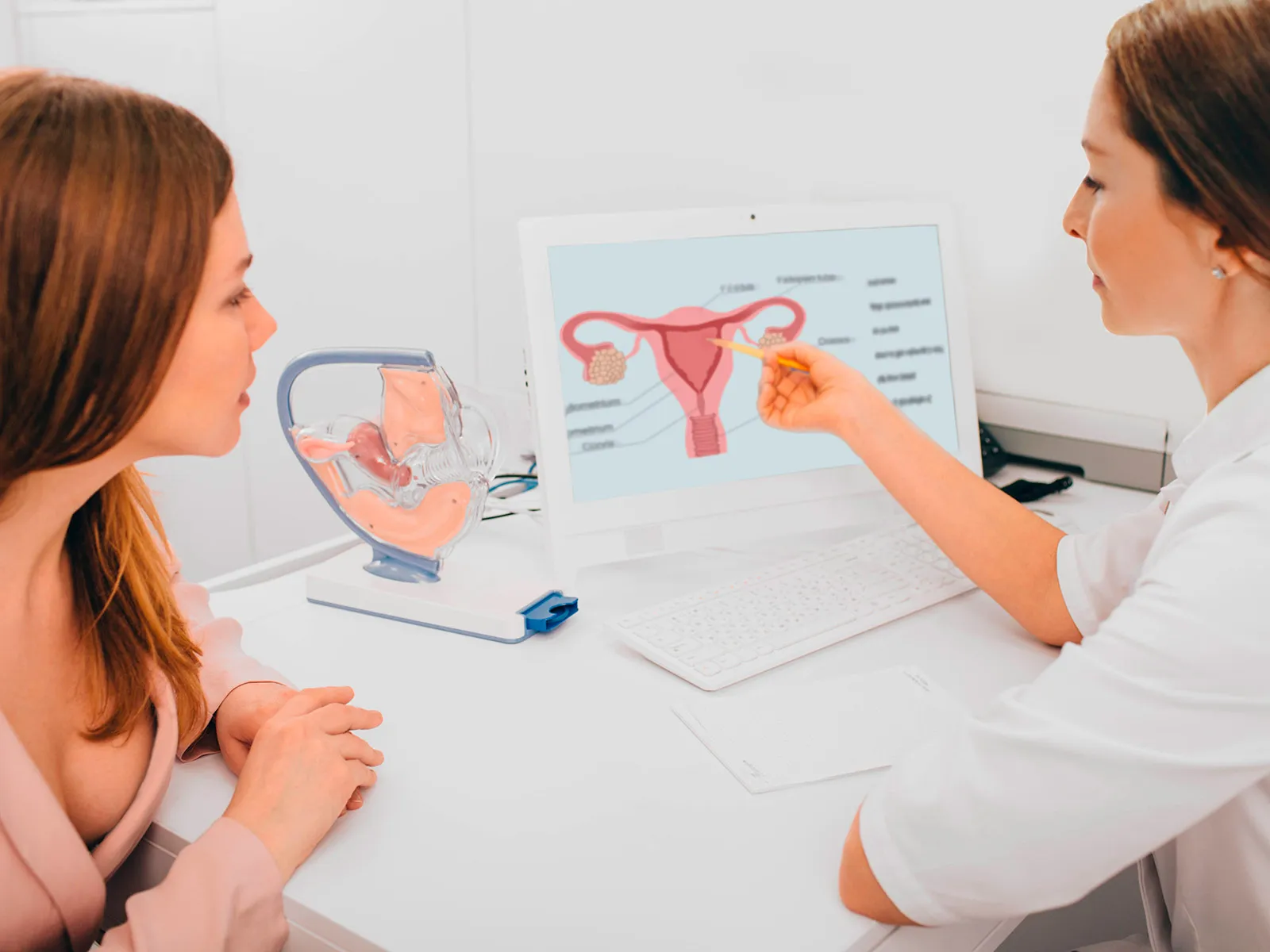THE FERTILE GROUP CLINICAL TREATMENTS
In Vitro Fertilization (IVF)
In Vitro Fertilization, or IVF, allows us to fertilize an egg with a sperm outside the mother’s uterus. It is a laboratory procedure that consists of the union and fertilization of an egg with a sperm outside the uterus. In the event that a woman is unable to produce an adequate number of good quality oocytes, she can turn to an egg donor.

In Vitro Fertilization, or IVF, is a laboratory procedure that involves the union and fertilization of an egg with a sperm outside the uterus.

The purpose of in vitro fertilization is to obtain healthy embryos that will be successively transferred into the mother’s uterus where they will evolve until a pregnancy is obtained.
- What is In Vitro Fertilization?
- Different IVF options
- How is it done?
- The day of Insemination
- How much does it cost?
IVF
In Vitro Fertilization, or IVF, is a laboratory procedure that involves the union and fertilization of an egg with a sperm outside the uterus.
The purpose of in vitro fertilization is to obtain healthy embryos that will be successively transferred into the mother’s uterus where they will evolve until a pregnancy is obtained.
In the event that a woman is unable to produce an adequate number of good quality oocytes, she can turn to an egg donor.

01
IVF with your own eggs and your partner's sperm
The eggs we extract from you are fertilized with your partner’s semen.
02
IVF with own eggs and donor sperm
The eggs we retrieve from you are fertilized with donor sperm.
03
IVF with own eggs and donor sperm
When the eggs lose their potential to generate a pregnancy or there is a decrease in their number, we can resort to the eggs of another woman. This offers a higher probability of success for certain ages or specific medical situations.
04
IVF with donor eggs and donor sperm
In certain cases of infertility, the eggs of a donor can be fertilized with the sperm of an anonymous donor.
05
ROPA Method
It is a variant of In Vitro Fertilization (IVF) for couples of women who decide to have a baby and wish to actively participate in the pregnancy.
01
Treatment Design
Each patient and each case is unique, therefore, each treatment at The Fertile Group is individualized. Our assisted reproduction specialists analyze the couple’s medical history and any previous treatments performed. The purpose is to determine the origin of infertility and to design the most appropriate IVF treatment in case this is the most suitable procedure to achieve pregnancy.
02
Ovarian stimulation
To maximize the chances of pregnancy, we need to obtain more than one egg, which is what matures naturally each month in a woman’s ovary. Good stimulation is key to future success. Conseguir el mayor número de ovocitos es importante, pero aún más la calidad de estos. The total process of ovarian stimulation can take approximately 8 to 12 days. The Fertile Group’s medical team performs several ultrasounds (3 to 4) and blood tests throughout the process until the follicles have reached the appropriate number and size. At this point, egg maturation is induced with an injection of hCG hormone.
03
Puncture
36 hours after the hCG injection, the eggs are collected by vaginal ultrasound. Light sedation is administered to ensure that our patients do not experience any discomfort. To perform the puncture, the ovaries are accessed from the vaginal cavity with an ultrasound probe and the fluid is aspirated from each follicle. It is in this liquid that the eggs that will be fertilized in our IVF laboratory are found.
After the puncture, our patient usually rests for an hour and then returns home and to her usual routine.
04
In-vitro fertilization
The next step consists of in vitro fertilization of the collected eggs with spermatozoa previously capacitated in the laboratory. Fertilization can be performed with sperm from the couple or donor sperm, depending on each case and needs of our patients.
In The Fertile Group’s laboratory, our embryologists proceed with fertilization by joining the eggs to the sperm one by one, either with the conventional IVF technique or using the ICSI technique, which consists of the individualized selection of the best sperm, which through a fine needle are deposited directly into the interior of each egg.
The result of fertilization (day 1 of embryonic life) will be observed approximately 18 hours later. We will then know how many eggs have been successfully fertilized.
05
Embryo culture
Embryo culture lasts 5 to 6 days. During this time, our embryologists observe and analyze embryonic development in incubators that reproduce the same conditions of the maternal uterus. Throughout the culture, the quality of the embryos is controlled in terms of morphology, capacity and division times. This information is essential for our specialists at The Fertile Group, as some embryos may become blocked during their development or others will have to be considered non-viable for a future transfer.
01
Transfer of the best embryo
After having reached the blastocyst stage (after 5/6 days of culture) and after having prepared the uterus to receive the embryo, the embryo is transferred into the maternal uterus with a cannula. The goal is for the embryo to implant in the uterine walls over the next few days and subsequently result in a healthy pregnancy and delivery. While the embryo waits for the maternal uterus to be ready to receive it, it can be frozen to await the optimal moment for its transfer. This technique is defined as frozen embryo transfer, and at The Fertile Group, it is the standard protocol for all of our patients.
Several recent medical studies show that the transfer of previously frozen embryos increases implantation rates and improves obstetric outcomes.
Frozen embryo transfer also allows for a more natural experience of the optimal timing of uterine reception, as the embryo can be cryopreserved or “frozen” until the mother’s hormone levels return to a more natural state after ovarian stimulation.
02
Vitrification of the remaining embryos
At the same time, vitrification (cryopreservation) of the remaining good quality embryos that were not transferred during the cycle is carried out, so that they can be used in a subsequent cycle without our patient needing to undergo a new ovarian stimulation.
Costs
The cost of this treatment, depending on the clinical conditions of each patient, usually ranges from 4,500$ to 6,000$, including ovarian stimulation medication.
The Fertile Group also offers you financing facilities for your treatment.

Egg donor
In the event that a woman is unable to produce an adequate number of good quality oocytes, she can turn to an egg donor.
Results
Your doctor at The Fertile Group will tell you the optimal date for a blood pregnancy test, which is usually 11 days after embryo transfer. The patient can lead a normal life during those days, although it is advisable to avoid high intensity activities.
Our specialists are at your complete disposal.
The best moments are born thanks to the best hands.
Do you need more information?

.png)